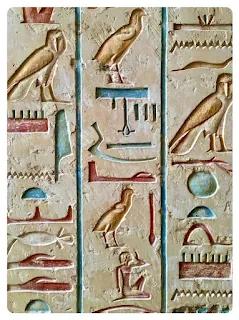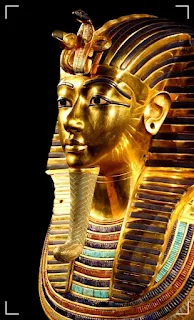5 Interesting Facts Regarding Egypt And Its History
Hey Guys , I am very happy to share this post with you all. Here in this post we will be talking about the interesting facts regarding Egypt and its history . So without any further delay let’s start.
1. The Great Pyramid of Giza is the only remaining wonder of the ancient world.
The Great Pyramid of Giza is the
only remaining wonder of the ancient world. The temples and pyramids at once
represented a magnum opus by Egyptian architects and an enduring testament to
their own culture’s mastery of architecture, engineering, mathematics,
astronomy and religion. They were built for pharaohs Amenhotep III (1391- 1352
BC) and his son Akhenaton (1353-1336 BC), but also in memory of those who died
during construction or later from the effects of mummification practices.
The pyramids are not just
monuments but also a complex scientific instrument for measuring time, seasons,
lunar cycles and solar years; they functioned as gigantic calendars that
recorded events like royal births or deaths. The massive stone blocks used in
their construction came from quarries more than 100 miles away since then
called “mighty mountains” because it was believed they could not be reached
without supernatural help. One hypothesis is that this amazing feat was
accomplished with the use of advanced technology such as pulleys made out of
ropes while others think workers used ramps so heavy stones could easily be
moved along tracks into place on top one another using levers to press blocks
into place.
The Great Pyramid is the largest of
the three pyramids. It was built for Pharaoh Amenhotep III (1391-1352 BC) and
his son Akhenaton (1353-1336 BC), but also in memory of those who died during
construction or later from the effects of mummification practices.
The Sphinx at Giza stands guard
over an equally magnificent pyramid complex which consists of five structures,
four being temples and a mortuary temple, with a total area larger than New
York City’s Central Park. The only surviving monolith from ancient Egypt, it
represents an idealized version of a human body with its head looking back
toward the Pyramids and its paws holding up an limestone statue of what may
have been a solar boat or sun disc. Its face bears a deep and moving expression
that has been compared to those on Greek statues by philosopher Immanuel Kant
and novelist E A Poe
The Great Sphinx is a monolith
made of limestone that was carved in the form of a human body with its head
turned to its paws, it also has an inscribed wall around it which faces
directly towards the pyramids.
The Pyramids at Giza are believed
to have been built for King Khufu, who ruled from 2558 BCE – 2467 BCE. The
largest pyramid is called “the” Pyramid because it is the only one of the Seven
Wonders of the Ancient World still standing and is considered to be an example
of perfect proportion and design. The Pyramids are located on what used to be
an island in Lake Moeris but now lies below sea level as all land surrounding
them has been reclaimed by water over time leaving behind only their
foundations.
2. Egypt was once ruled by a series of powerful pharaohs.
In ancient Egypt, there was a strong belief in many Gods and Goddesses. The most important ones were Horus, Isis, and Osiris. They believed that the pharaohs were gods, because they had special powers to make people forget their past lives so they wouldn’t remember what happened during those times. Egyptians would sacrifice animals or humans to these gods for them to give them power and health.
3. The Nile River is the longest river in Africa and has played a significant role in Egyptian history and culture.
In the beginning of its history,
the Nile River was a seasonal river that only flowed during the rainy season.
During this time, it flooded and carried silt from all over Egypt. However, in
order to keep up with population growth and agricultural demand, early
Egyptians built canals to divert water into fields during dry seasons so they
could farm year-round. These canals are still visible today under some parts of
Cairo.
In ancient Egyptian mythology,
the Nile is described as a mother goddess who created humans out of mud by
breathing life into them. According to Herodotus’ Histories (1:2), “The
Egyptians call that river which rises in Ethiopia Nymphaeum (Nile)” because
when an ox was sacrificed every year at its source for any possible blessings
it may bring, then it was called ‘Nilos’ or ‘the Ox’s River’ in Greek language.
Herodotus also stated that back then people used to worship their rivers like
gods and would celebrate their yearly birthdays accordingly by building temples
along their banks and holding festivals there.
4. Ancient Egyptians were experts in a variety of fields, including mathematics, astronomy, and medicine.
The Great Pyramid of Giza is one of the Seven Wonders
of the World and was built more than 4,500 years ago by ancient Egyptians. The pyramid was their most recognized monument
because it has an accurate measurement: It covers 756 feet (228 meters) on each
side, making it almost perfectly proportioned according to the golden ratio. This ratio can be found in many other structures
throughout Egypt, including temples and tombs from around this time period as
well as later ones like those at Luxor Temple . There are several theories regarding how they built
such precise pyramids without modern equipment or tools but using only basic
geometry concepts such as right angles and triangles . One theory suggests that they would cut large
limestone slabs into rectangular blocks with precision chisels then put these
together in a specific pattern to form a pyramid shape.
There is evidence that the
ancient Egyptians had a well developed knowledge of medicine, and they were
experts in its practice. The Edwin Smith Surgical Papyrus dates to the New
Kingdom (1550 BCE – 1070 BCE) it is an early example of surgery and describes
31 different surgical procedures which are performed on patients ranging from
head lice removal to amputations.
The Ebers Medical Book from
around 1550 contains over 700 prescriptions for various ailments such as
fractures, ulcers, eye problems, snakebites and even animal bites. It was
written by Egyptian physician Hakim Ebers who compiled this book using earlier
texts dating back to Ancient Egypt’s Ptolemaic period (305-30 BCE).
Ancient Egyptians used a form of
anesthesia during surgeries for their patients. They would administer wine or
opium in order to put their patients into a deep sleep before performing any
kind of operation on them. The use of sedatives like opium was common because
it reduced pain and made people more relaxed which facilitated better
post-operative recovery rates. Opium has been found in many mummies suggesting
that they may have regularly consumed opiates prior to death.
Arabs, Greeks and Romans all had an interest in and
developed advanced knowledge of astronomy. The ancient Egyptians were masters at it too. Their priests used the stars to navigate across the
desert by skilfully combining observations of the movement of heavenly bodies
with information about their seasonal changes provided by a lunar calendar.
The first known astronomical text is entitled ‘The
Edwin Stone’ which was found in 1830 during excavations for the construction of
Karlsruhe Castle in Germany (in modern-day Mexico). Written circa 2000 BC, this contains over 300 star
charts showing positions on a celestial sphere.
One such piece of writing from around 1300BC shows
that they knew that Mercury moves against reference points, not just along its
own path but also appears to stop as it crosses other stars or even disappears
from view behind them. This discovery proves that ancient Egyptians could predict
eclipses centuries before anyone else did so using basic astronomical
principles alone without any scientific instruments or technology whatsoever
(such as telescopes).
In fact, when looking at everything we know today about
Egyptian astronomy, it is easy to see why they are considered experts: they
were able to use simple tools such as sticks and stones to create calendars
The ancient Egyptians also developed a system of using the
movement of the stars to determine the correct time to start certain tasks. This is called ‘astronomical
time’ and it relies on knowing when certain stars rise and set each day. The key dates in their
calendar were based on astronomical observations, such as the rising and
setting of Sirius (the brightest star in our night sky) which marked the
heliacal (beginning) point for summer months.
This calendar was not only used in Egypt though because it
became popular all over North Africa, Europe and Asia too. Egyptian culture
flourished for thousands of years and remains one of the most influential ones
to this day due to their development of mathematics, architecture, law etc.
In conclusion, we now know that ancient Egyptians had an
impressive knowledge about astronomy, which they passed down from generation to
generation thanks to a sophisticated written language that was also used for
religious purposes by priests who were experts at interpreting these texts as
well as understanding how celestial bodies worked together with each other
(such as when they would move into different positions). Their advanced knowledge
allowed them to use simple tools like sticks or stones along with basic
astronomical principles alone without any scientific instruments or technology
whatsoever (such as telescopes) without even realizing it!
5. Egypt has a rich and diverse history that has been influenced by a number of different cultures over the centuries.
Egypt, the most populated country in Africa and the
seventh most populated country in the world, has a rich and diverse history
that has been influenced by a number of different cultures over the centuries. The area now known as Egypt was once home to an
ancient civilization called the Nile Valley Civilization. Throughout
history, many civilizations have invaded and conquered parts of this land
including Nubia (today’s Sudan), Assyria and Persia among others. In 332 BC, Alexander the Great conquered much of what is now modern
day Egypt after defeating Darius III at the Battle of Issus. Ptolemy I founded the Ptolemaic Kingdom which would rule until
Cleopatra VII was defeated by Octavian during Antony’s invasion. After this period, many Muslim sects began to invade
and conquer parts of today’s Egypt with Fatimid Caliphate being one such group
who controlled all or almost all Egyptian territory for nearly three hundred
years up until their defeat by Saladin in 1171 AD The Ottoman Empire then took
control up until 1909 when Britain officially took control over what is today
known as modern day Egypt although it was still under British occupation from 1882 – 1922.
One thing that makes Egypt unique compared to other
countries throughout history is its diversity in terms of ethnicity and
culture. Many different people throughout history have inhabited this
land including Egyptians, Nubians, Libyans and Arabs amongst many others. According to a report conducted in 2017 by Pew Research
Center there are more than 85 ethnic groups living within modern-day borders of
Egypt which include Afro-Asiatic (including Berbers) 39%, Arab 20%, Caucasian
14%,

.webp)



.webp)
.webp)
.webp)

